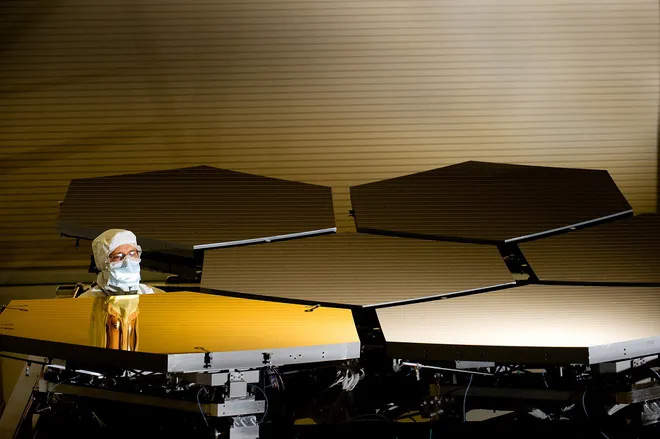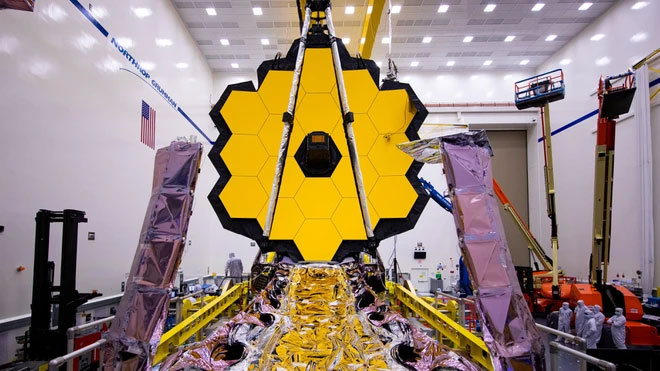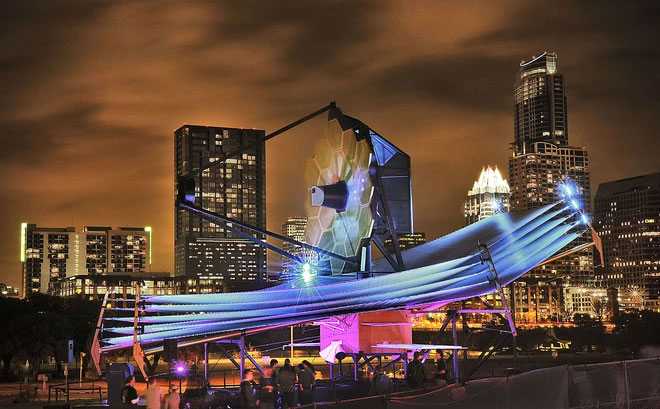Scheduled for launch in December, the James Webb Space Telescope is expected to answer humanity’s questions about how the universe formed and the existence of life beyond Earth.
The James Webb Space Telescope, the most powerful space telescope developed by the National Aeronautics and Space Administration (NASA), will be launched on December 18 from French Guiana.
This moment has been eagerly awaited by the astronomical community for a decade. The launch of James Webb has been postponed multiple times due to technical issues and the global pandemic. This telescope is tasked with answering questions about the Solar System, analyzing the atmospheres of exoplanets, and searching for signs related to extraterrestrial life.
17 Years and 40 Million Hours to Complete
The James Webb Telescope has been in development since 2004. Since then, thousands of scientists, technicians, and engineers from 14 countries have dedicated over 40 million hours to building the telescope. According to CNN, the telescope features a mirror with a diameter of 6.5 meters, allowing it to collect more light from celestial objects. Collecting more light means the telescope can observe more details.

The gold mirror of the James Webb telescope can unfold like origami from Japan. (Photo: CNN).
This is the largest mirror ever built by NASA for a telescope. Its size means the mirror cannot fit into a rocket in one piece. Therefore, NASA designed the components of the telescope to fold like Japanese origami. Once in space, motors and actuators will deploy the mirror.
Each telescope is developed based on experiences from previous generations. The mirror of the James Webb is 60 times larger than those of earlier telescopes. Its resolution and sensitivity are also superior to the Hubble Space Telescope, which has been operational since 1990.
The Mission of James Webb
The James Webb Telescope is expected to help us understand more about the origins of the universe, uncover clues about the formation and existence of humanity, and the potential for life beyond Earth.
The James Webb Telescope will analyze every stage of the universe’s history, including the first light after the Big Bang, the formation of galaxies, stars, and planets. The power of this telescope may answer questions about how the first galaxies formed 13.5 billion years ago.
Scientists will also use James Webb to observe and analyze planets, black holes, galaxies, stars, and cosmic structures. They will focus on observing the formation and evolution of planets both within and outside the Solar System, particularly those located in the habitable zone, where temperatures are suitable for liquid water to form.
With the help of the Spitzer Space Telescope, NASA’s team of scientists has set observational goals for James Webb. One of these targets is TRAPPIST-1e, a planet discovered in February 2017 that may have water on its surface. James Webb can describe the characteristics, measure the size, and gather complex details about the planet better than Spitzer.

James Webb is considered the most powerful space telescope ever built. (Photo: NASA).
In addition to TRAPPIST-1e, James Webb will also observe the atmospheres of many other exoplanets. Spectroscopic data from the telescope could help scientists determine the amounts of methane, carbon dioxide, or carbon monoxide in the atmospheres, thereby analyzing the formation and development processes of these exoplanets.
Other objects that James Webb can observe include supermassive black holes at the center of the Milky Way, the formation of planetary systems, bright quasars at the centers of galaxies, and the Kuiper Belt, which is made up of leftover celestial bodies from the formation of the Solar System, including Pluto and its moon Charon.
The Most Powerful Telescope Ever Built
With its capabilities, James Webb is regarded as the most powerful telescope ever constructed. The telescope consists of three main components: the Integrated Science Instrument Module, which contains four instruments for imaging or spectroscopy, breaking light into different wavelengths to determine physical and chemical properties.
The second component is the Optical Telescope Element, which includes the mirror and supporting structure. Finally, the Spacecraft Element consists of the spacecraft bus and a sunshield.
The telescope’s bus contains essential systems to operate the spacecraft, including propulsion, electrical, communication, data, and thermal control systems. Meanwhile, the sunshield, which is the size of a tennis court, will protect the mirror and components of James Webb from the Sun’s heat, as they need to be kept at temperatures of -188 degrees Celsius to function.
If the Perseverance rover lands on Mars after a “seven minutes of terror”—the time it takes to slow down for a safe landing—NASA describes that James Webb will undergo “29 days on the edge.” Specifically, after launching from French Guiana, the telescope will travel for 29 days to reach an orbit approximately 1.6 million kilometers from Earth. During this time, James Webb will need to deploy its mirror and sunshield.

A model of James Webb displayed in Austin, Texas. (Photo: NASA).
This process requires thousands of components to operate perfectly in sequence. However, unlike the seven minutes for Perseverance, scientists on the ground can control the movements of James Webb during its 29-day journey to address any issues that may arise.
Once in orbit, James Webb will undergo six months of testing, including cooling down and calibrating its systems. By the end of 2022, the telescope will begin collecting data and its first images.
“The first five years of operation for the James Webb Telescope will give scientists around the world the opportunity to observe specific targets. Exciting scientific discoveries will be shared with the global community,” said Thomas Zurbuchen, Associate Administrator for Science Mission Directorate at NASA.

















































